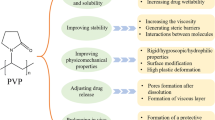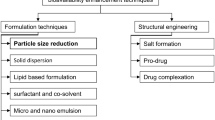Abstract
Immunoglobulin G (IgG) is an antibody used in numerous therapeutic indications. For this reason, high-purity IgG is required, which implies the use of selective adsorption chromatographic purification techniques. Although, before using chromatography, it is highly important to study the interaction between IgG and the adsorbent. Due to its characteristics, biopolymeric adsorbents are widely studied. However, there are no studies in the literature that evaluate IgG adsorption onto fibroin, a natural polymer that can be used as an ion exchange adsorbent. Thus, the aim of this work was to evaluate the adsorption of human IgG on fibroin microparticles. The microparticles were prepared from fibroin solution using the atomization method, with an average diameter of 108.5 μm. Three buffers (MOPS, MES and Tris–HCl), with different pH, were used, and for the best conditions, the influence of ionic strength (NaCl from 0 to 1 mol L−1), temperature (4 °C to 37 °C) and rotation (20 rpm to 40 rpm) were studied. The highest adsorption capacity (906.45 mg g−1) was reached with the MOPS buffer at pH 8.0, without NaCl, 25 °C and 30 rpm, which is higher than typical adsorption capacities found in the literature for other adsorbents. The adsorption capacity reduced with increasing temperature from 25 °C to 37 °C and rotation rate from 30 to 40 rpm. The thermodynamic parameters demonstrated that adsorption is spontaneous and endothermic. These results open up new possibilities of application of fibroin microparticles, considering the medium in which they are inserted, and highlights the improvement of IgG chromatographic purification for uses in pharmaceutical field.
Graphical abstract










Similar content being viewed by others
Data availability
Data will be provided upon request of corresponding author.
References
Daëron, M.: Structural bases of FcγR functions. Int. Rev. Immunol. (1997). https://doi.org/10.3109/08830189709045701
Kempf, C., Stucki, M., Boschetti, N.: Pathogen inactivation and removal procedures used in the production of intravenous immunoglobulins. Biologicals (2007). https://doi.org/10.1016/j.biologicals.2006.01.002
Biopharmaceuticals Market—Growth, Trends, Covid-19 Impact, And Forecasts (2021–2026), Business Wire. https://www.businesswire.com/news/home/20210301005774/en/Global-Peptide-Therapeutics-Market-2021-to-2026---Growth-Trends-COVID-19-Impact-and-Forecasts---ResearchAndMarkets.com (2023) Accessed 6 May 2023
Cohn, E.J., Strong, L.E., Hughes, W., Mulford, D.J., Ashworth, J.N., Melin, M.E., Taylor, H.L.: Preparation and properties of serum and plasma proteins. IV. A system for the separation into fractions of the protein and lipoprotein components of biological tissues and fluids. J. Am. Chem. Soc. (1946). https://doi.org/10.1021/ja01207a034
Nfor, B.K., Ahamed, T., van Dedem, G.W., van der Wielen, L.A., van de Sandt, E.J., Eppink, M.H., Ottens, M.: Design strategies for integrated protein purification processes: challenges, progress and outlook. J. Chem. Technol. Biotechnol. (2008). https://doi.org/10.1002/jctb.1815
Kucharska, M., Grabka, J.: A review of chromatographic methods for determination of synthetic food dyes. Talanta (2010). https://doi.org/10.1016/j.talanta.2009.09.032
Mandal, B.B., Kundu, S.C.: Cell proliferation and migration in silk fibroin 3D scaffolds. Biomater. (2009). https://doi.org/10.1016/j.biomaterials.2009.02.006
Altman, G.H., Diaz, F., Jakuba, C., Calabro, T., Horan, R.L., Chen, J., Kaplan, D.L.: Silk-based biomaterials. Biomater. (2003). https://doi.org/10.1016/S0142-9612(02)00353-8
Wenk, E., Merkle, H.P., Meinel, L.: Silk fibroin as a vehicle for drug delivery applications. J. Control. Release (2011). https://doi.org/10.1016/j.jconrel.2010.11.007
Chen, J., Minoura, N., Tanioka, A.: Transport of pharmaceuticals through silk fibroin membrane. Polym. (1994). https://doi.org/10.1016/0032-3861(94)90317-4
Kapoor, S., Kundu, S.C.: Silk protein-based hydrogels: Promising advanced materials for biomedical applications. Acta Biomater. (2016). https://doi.org/10.1016/j.actbio.2015.11.034
Wongpanit, P., Rujiravanit, R.: Combinatorial effects of charge characteristics and hydrophobicity of silk fibroin on the sorption and release of charged dyes. J. Biomater. Sci. Polym. Ed. (2012). https://doi.org/10.1163/092050611X576972
Nitayaphat, W., Jintakosol, T.: Adsorption of Ag (I) from aqueous solutions using regenerated silk fibroin adsorbent beads. J. Nat. Fibers. (2022). https://doi.org/10.1080/15440478.2020.1848697
Milonjić, S.K.: A consideration of the correct calculation of thermodynamic parameters of adsorption. J. Serb. Chem. (2007). https://doi.org/10.2298/JSC0712363M
Pinheiro, C.P., Moreira, L.M., Alves, S.S., Cadaval, T.R., Jr., Pinto, L.A.: Anthocyanins concentration by adsorption onto chitosan and alginate beads: isotherms, kinetics and thermodynamics parameters. Int. J. Biol. Macromol. (2021). https://doi.org/10.1016/j.ijbiomac.2020.10.250
El-Khaiary, M.I., Malash, G.F.: Common data analysis errors in batch adsorption studies. Hydrometallurgy (2011). https://doi.org/10.1016/j.hydromet.2010.11.005
Perrechil, F.A., Vilela, J.A., Guerreiro, L.M., Cunha, R.L.: Development of Na-CN—κ-carrageenan microbeads for the encapsulation of lipophilic compounds. Food Biophys. (2012). https://doi.org/10.1007/s11483-012-9265-0
Dyakonov, T., Yang, C.H., Bush, D., Gosangari, S., Majuru, S., Fatmi, A.: Design and characterization of a silk-fibroin-based drug delivery platform using naproxen as a model drug. J. Drug Deliv. (2012). https://doi.org/10.1155/2012/490514
Lammel, A.S., Hu, X., Park, S.H., Kaplan, D.L., Scheibel, T.R.: Controlling silk fibroin particle features for drug delivery. Biomater. (2010). https://doi.org/10.1016/j.biomaterials.2010.02.024
Barth, A., Zscherp, C.: What vibrations tell about proteins. Q. Rev. Biophys. (2002). https://doi.org/10.1017/S0033583502003815
Nogueira, G.M., de Moraes, M.A., Rodas, A.C.D., Higa, O.Z., Beppu, M.M.: Hydrogels from silk fibroin metastable solution: formation and characterization from a biomaterial perspective. Mater. Sci. Eng. (2011). https://doi.org/10.1016/j.msec.2011.02.019
Nogueira, G.M., Rodas, A.C., Leite, C.A., Giles, C., Higa, O.Z., Polakiewicz, B., Beppu, M.M.: Preparation and characterization of ethanol-treated silk fibroin dense membranes for biomaterials application using waste silk fibers as raw material. Bioresour. Technol. (2010). https://doi.org/10.1016/j.biortech.2010.06.064
de Moraes, M.A., Albrecht, M.C.R., Ferreira, S.M., Beppu, M.M.: Formation of silk fibroin hydrogel and evaluation of its drug release profile. J. Appl. Polym. Sci. (2015). https://doi.org/10.1002/app.41802
Hu, Y., Zhang, Q., You, R., Wang, L., Li, M.: The relationship between secondary structure and biodegradation behavior of silk fibroin scaffolds. Adv. Mater. Sci. Eng. (2012). https://doi.org/10.1155/2012/185905
Nisal, A., Sayyad, R., Dhavale, P., Khude, B., Deshpande, R., Mapare, V., Venugopalan, P.: Silk fibroin micro-particle scaffolds with superior compression modulus and slow bioresorption for effective bone regeneration. Sci. Rep. (2018). https://doi.org/10.1038/s41598-018-25643-x
Lee, K.Y., Ha, W.S.: DSC studies on bound water in silk fibroin/S-carboxymethyl kerateine blend films. Polymer (1999). https://doi.org/10.1016/S0032-3861(98)00611-9
Motta, A., Fambri, L., Migliaresi, C.: Regenerated silk fibroin films: thermal and dynamic mechanical analysis. Macromol. Chem. Phys. (2002). https://doi.org/10.1002/1521-3935(200207)203:10/11%3c1658::AID-MACP1658%3e3.0.CO;2-3
Hu, X., Kaplan, D., Cebe, P.: Dynamic protein−water relationships during β-sheet formation. Macromolecules (2008). https://doi.org/10.1021/ma071551d
Freddi, G., Pessina, G., Tsukada, M.: Swelling and dissolution of silk fibroin (Bombyx mori) in N-methyl morpholine N-oxide. Int. J. Biol. Macromol. (1999). https://doi.org/10.1016/S0141-8130(98)00087-7
Radu, I.C., Biru, I.E., Damian, C.M., Ion, A.C., Iovu, H., Tanasa, E., Zaharia, C., Galateanu, B.: Grafting versus crosslinking of silk Fibroin-g-PNIPAM via tyrosine-NIPAM bridges. Molecules (2019). https://doi.org/10.3390/molecules24224096
Um, I.C., Kweon, H., Park, Y.H., Hudson, S.: Structural characteristics and properties of the regenerated silk fibroin prepared from formic acid. Int. J. Biol. Macromol. (2001). https://doi.org/10.1016/S0141-8130(01)00159-3
Gomes, P.F., Loureiro, J.M., Rodrigues, A.E.: Adsorption equilibrium and kinetics of Immunoglobulin G on a mixed-mode adsorbent in batch and packed bed configuration. J. Chromatogr. A (2017). https://doi.org/10.1016/j.chroma.2017.10.003
Rastogi, S., Kandasubramanian, B.: Progressive trends in heavy metal ions and dyes adsorption using silk fibroin composites. Environ. Sci. Pollut. Res. (2020). https://doi.org/10.1007/s11356-019-07280-7
Bresolin, I.T.L., Souza, M.C.M., Bueno, S.M.A.: A new process of IgG purification by negative chromatography: adsorption aspects of human serum proteins onto omega-amynodecyl-agarose. J. Chrom. B (2010). https://doi.org/10.1016/j.jchromb.2010.06.009
Jin, Y., Luo, G., Oka, T., Manabe, T.: Estimation of isoelectric points of human plasma proteins employing capillary isoelectric focusing and peptide isoelectric point markers. Electrophor. (2002). https://doi.org/10.1002/1522-2683(200210)23:19%3c3385::AID-ELPS3385%3e3.0.CO;2-H
Lu, H.L., Lin, D.Q., Gao, D., Yao, S.J.: Evaluation of immunoglobulin adsorption on the hydrophobic charge-induction resins with different ligand densities and pore sizes. J. Chromatogr. A (2013). https://doi.org/10.1016/j.chroma.2012.12.054
Mathes, J., Friess, W.: Influence of pH and ionic strength on IgG adsorption to vials. Eur. J. Pharm. Biopharm. (2011). https://doi.org/10.1016/j.ejpb.2011.03.009
Saksena, S., Zydney, A.L.: Effect of solution pH and ionic strength on the separation of albumin from immunoglobulins (IgG) by selective filtration. Biotechnol. Bioeng. (1994). https://doi.org/10.1002/bit.260431009
Xu, W., Cao, J.F., Zhang, Y.Y., Shu, Y., Wang, J.H.: Boronic acid modified polyoxometalate-alginate hybrid for the isolation of glycoproteins at neutral environment. Talanta (2020). https://doi.org/10.1016/j.talanta.2019.120620
Nitayaphat, W., Jintakosol, T.: Efficient removal of cationic and anionic dyes from aqueous solutions using regenerated silk fibroin beads. Asian. J. Chem. (2020). https://doi.org/10.14233/ajchem.2020.22650
Fishman, J.B., Berg, E.A.: Protein A and protein G purification of antibodies. Cold Spring Harb Protoc (2019). https://doi.org/10.1101/pdb.prot099143
Sigma-Aldrich. Protein G Agarose lyophilized powder product specification https://www.sigmaaldrich.com/specification-sheets/360/314/P7700-BULK________SIGMA____.pdf Accessed 13 Aug 2023
Mourão, C.A., Marcuz, C., Haupt, K., Bueno, S.M.A.: Polyacrylamide-alginate (PAAm-Alg) and phospho-L-tyrosine-linked PAAm-Alg monolithic cryogels: Purification of IgG from human serum. J. Chromatogr. B (2019). https://doi.org/10.1016/j.jchromb.2019.121783
Marcuz, C., Mourão, C.A., Haupt, K., Bueno, S.M.A.: Performance of phospho-L-tyrosine immobilized onto alginate/polyacrylamide-based cryogels: effect of ligand coupling on human IgG adsorption and Fab fragments separation. J. Chromatogr. B (2021). https://doi.org/10.1016/j.jchromb.2021.122530
Shinku, C.A., Martins, T.D., Bresolin, I.T., Bresolin, I.R.: Human immunoglobulin G adsorption in hydrophobic ligands: equilibrium data, isotherm modelling and prediction using artificial neural networks. Chem. Pap. (2023). https://doi.org/10.1007/s11696-022-02548-8
Hirano, A., Kanoh, S., Shiraki, K., Wada, M., Kitamura, M., Kato, K.: Selective and high-capacity binding of immunoglobulin G to zirconia nanoparticles modified with phosphate groups. Colloids Surf. B (2023). https://doi.org/10.1016/j.colsurfb.2023.113291
Capela, E.V., Bairos, J., Pedro, A.Q., Neves, M.C., Aires-Barros, M.R., Azevedo, A.M., Coutinho, J.A.P., Tavares, A.P.M., Freire, M.G.: Supported ionic liquids as customizable materials to purify immunoglobulin G. Sep. Purif. Technol. (2023). https://doi.org/10.1016/j.seppur.2022.122464
Passaro, A.C.M., Mozetic, T.M., Schmitz, J.E., da Silva Jr, I.J., Martins, T.D., Bresolin, I.T.L.: Human immunoglobulin G adsorption in epoxy chitosan/alginate adsorbents: evaluation of isotherms by artificial neural networks. Chem. Prod. Process. Model. (2019). https://doi.org/10.1515/cppm-2019-0077
Dong, Q., Yang, M., Wang, Y., Guan, Y., Zhang, W., Zhang, Y.: Peptide-crosslinked molecularly imprinted polymers for efficient separation of immunoglobulin G from human serum. Biomater. Sci. (2023). https://doi.org/10.1039/D2BM01450E
Guo, P.F., Wang, X.M., Wang, M.M., Yang, T., Chen, M.L., Wang, J.H.: Boron-titanate monolayer nanosheets for highly selective adsorption of immunoglobulin G. Nanoscale (2019). https://doi.org/10.1039/C9NR01111K
de Oliveira Barud, H.G., da Silva, R.R., da Silva Barud, H., Tercjak, A., Gutierrez, J., Lustri, W.R., Ribeiro, S.J.: A multipurpose natural and renewable polymer in medical applications: bacterial cellulose. Carbohydr. Polym. (2016). https://doi.org/10.1016/j.carbpol.2016.07.059
Rockwood, D.N., Preda, R.C., Yücel, T., Wang, X., Lovett, M.L., Kaplan, D.L.: Materials fabrication from Bombyx mori silk fibroin. Nat. Protoc. (2011). https://doi.org/10.1038/nprot.2011.379
Sharma, S., Agarwal, G.P.: Interactions of proteins with immobilized metal ions: a comparative analysis using various isotherm models. Anal. Biochem. (2001). https://doi.org/10.1006/abio.2000.4894
Vermeer, A.W., Norde, W.: The thermal stability of immunoglobulin: unfolding and aggregation of a multi-domain protein. Biophys. J. (2000). https://doi.org/10.1016/S0006-3495(00)76602-1
Vidarsson, G., Dekkers, G., Rispens, T.: IgG subclasses and allotypes: from structure to effector functions. Front. Immunol. (2014). https://doi.org/10.3389/fimmu.2014.00520
Funding
Conselho Nacional de Desenvolvimento Científico e Tecnológico (CNPq/Brazil); Fundação de Amparo à Pesquisa do Estado de São Paulo (FAPESP/Brazil; Grant 2022/05336-6 and 2018/15539-6); Coordenação de Aperfeiçoamento de Pessoal de Nível Superior (CAPES/Brazil: Finance Code 001 and PNPD program).
Author information
Authors and Affiliations
Contributions
AOSJ: conceptualization, methodology, formal analysis resources, writing, and visualization; CPP: conceptualization, methodology, formal analysis resources, writing and original draft, visualization; ITLB: conceptualization, funding, review and editing, supervision, and MAM: conceptualization, funding, review and editing, supervision.
Corresponding author
Ethics declarations
Competing interest
The authors have no competing interests as defined by Springer, or other interests that might be perceived to influence the results and/or discussion reported in this paper.
Ethical approval
Not applicable.
Additional information
Publisher's Note
Springer Nature remains neutral with regard to jurisdictional claims in published maps and institutional affiliations.
Rights and permissions
Springer Nature or its licensor (e.g. a society or other partner) holds exclusive rights to this article under a publishing agreement with the author(s) or other rightsholder(s); author self-archiving of the accepted manuscript version of this article is solely governed by the terms of such publishing agreement and applicable law.
About this article
Cite this article
Santana, A.O., Pinheiro, C.P., Bresolin, I.T.L. et al. Adsorption of human immunoglobulin G using fibroin microparticles. Adsorption (2024). https://doi.org/10.1007/s10450-024-00440-3
Received:
Revised:
Accepted:
Published:
DOI: https://doi.org/10.1007/s10450-024-00440-3




